Can a City Thrive Without a Heart?
A personal story about downtown Louisville
“Men did not love Rome because she was great. She was great because they had loved her.”
– G.K. Chesterton, Orthodoxy
Can a city thrive without a heart? Meaning: can a city thrive without a relatively healthy downtown?
This is a story about my city, Louisville, Kentucky. Let’s face the brutal truth here: we’re irrelevant. The universe doesn’t care whether Louisville, or its downtown, thrives or survives. The body politic, the economy, wouldn’t miss a beat if they disappeared tomorrow. We’re a third-tier city in an America obsessed with New York, San Francisco, Miami, Boston, Vegas – even with Nashville, the Research Triangle, Tampa, Austin, Asheville, Denver and Minneapolis.
But I care.
Growing up, I would come downtown quite a bit. Dad worked there – as an attorney in a law firm and as part owner of a commercial real estate investment firm. Both firms had been founded or co-founded by his father in the 1950s. We came downtown to see Dad occasionally – first in the Marion E. Taylor Building on Fourth Street and then, after 1986, in First Trust Centre, on Market and Fifth Streets. We’d also come downtown for other reasons – shop at Stewart’s, or Rodes in the Starks Building.
In high school and on college breaks, I worked on a parking lot downtown. Years before, the lot attendants had been held up or had money stolen from the control booth. But I never felt nervous or fearful. It was an all-cash business in those simple days before online banking and smartphones. Usually we had two attendants working on each lot. But if the other guy was taking a break or walking the lot, I’d be alone. I paid attention, but again, I did not fear for my safety.
I’d walk down an alley between office buildings and the Starks Building Parking Garage to the Galleria, a shopping center on Fourth Street, which had opened in 1982. It had a packed food court and shops galore. Even a bookstore – an honest to goodness, real life bookstore. I perused its shelves almost every day on my lunch break. Again, by myself. A scrawny, weak-assed, 100-lb high schooler. It never would have occurred to me to carry a weapon, not even what today would be called an EDC knife. Again, I didn’t feel nervous or fearful.
Fast forward to 2020. During the summer of Covid and the Breonna Taylor protests and riots, I would walk and ruck all over downtown. At one point, for a rucking challenge, I rucked from my office to a food pantry in Portland in Louisville’s West End – by reputation, not a super-nice part of town. I didn’t worry that I’d get harassed or mugged.
An eerie cloud did hang over downtown that summer. Many buildings were boarded up during the protests. At ground level, I saw far more wood than glass. Because of Covid, most offices were closed, so few people went downtown.
Still, eeriness did not equate to feeling fearful. I rucked a ton of miles downtown in 2020 and 2021. Never did I feel nervous or cross the street because of something or someone up ahead.
Today, in the spring of 2023, I feel a change. Some people have returned to working downtown - the traffic has returned, for sure.

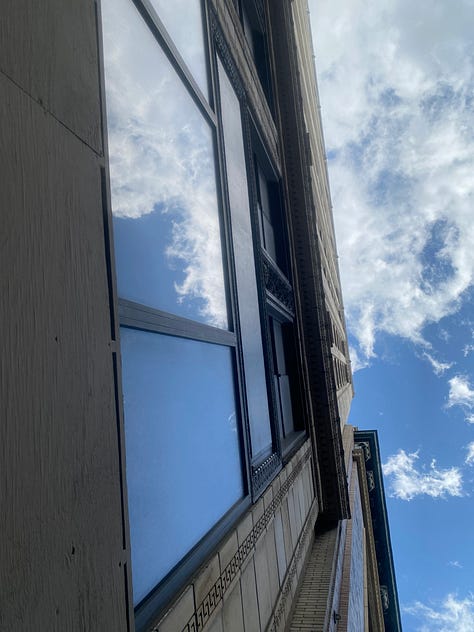
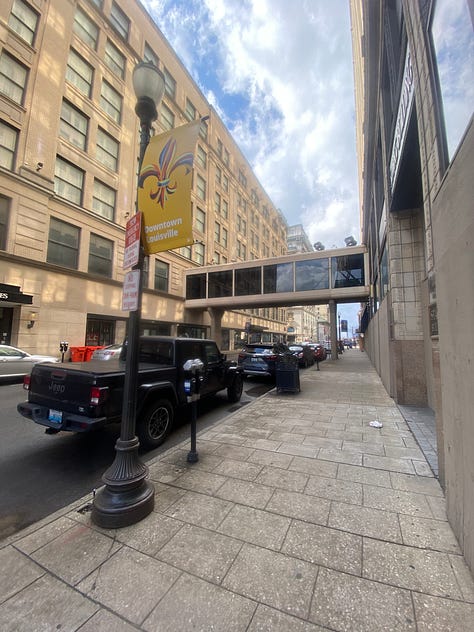
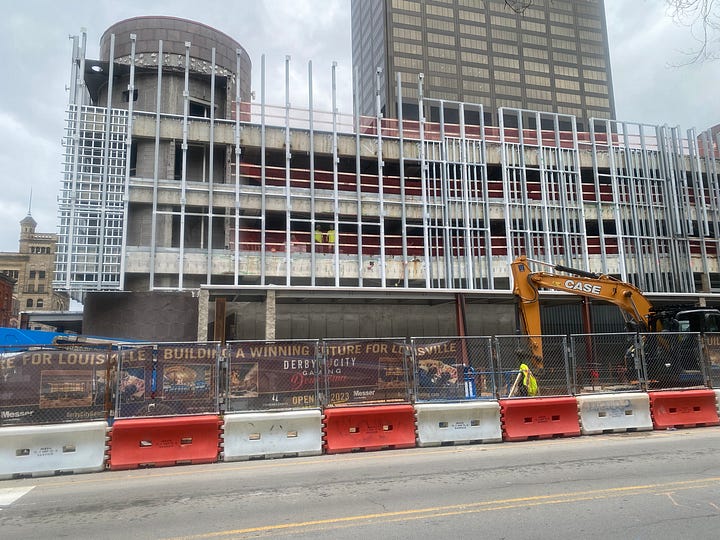
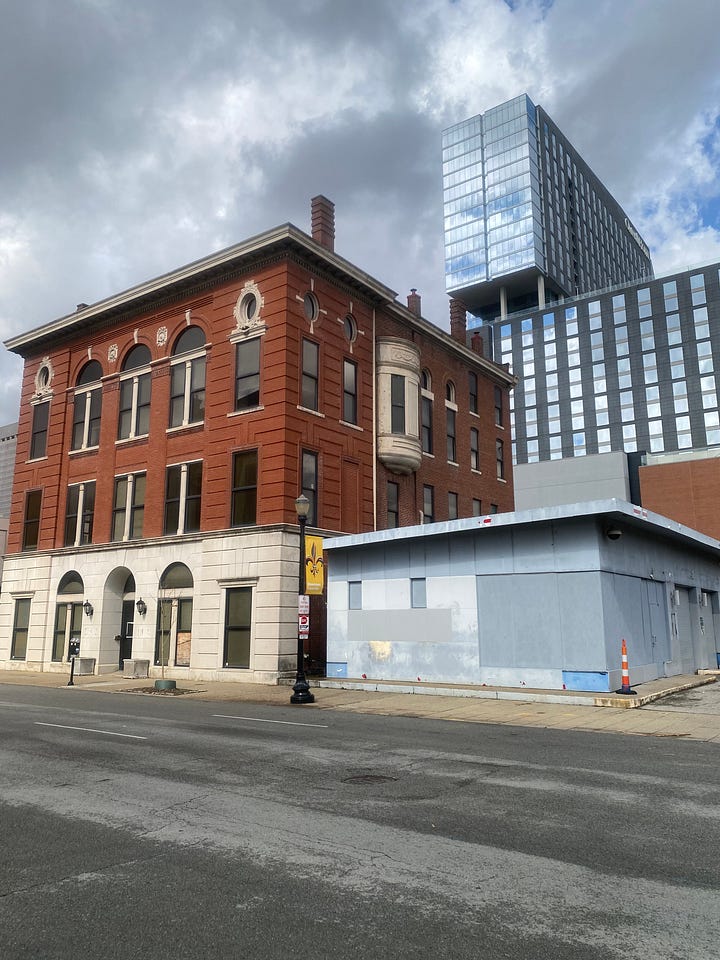
Many buildings remain boarded up, empty or under-utilized. The Starks Building – nothing seems to have happened for years. I can find no update since the summer of 2022. Walking by regularly, I see no evidence of renovations occurring. The Starbucks in the Seelbach Hotel closed in 2020 and never re-opened. The Starbucks in the Hyatt, a couple blocks down Fourth Street, closed recently. The Heine Bros. Coffee, a local coffeehouse chain, in Meidinger Tower, across from the Seelbach, closed on March 16, 2023. Heine Bros. replaced Starbucks in the PNC Tower (formerly National City Tower). Panera Bread left the office tower at 400 W. Market during Covid; nothing has replaced it. In 2016, it was announced that the Landmark Building would become a boutique hotel. No evident work has been done since then. The Brown & Williamson Tower, now apparently called 401 S. 4th, seems like a zombie when I walk through the lobby – alive and yet not really alive. The Galleria is long-gone, replaced by Fourth Street Live! in 2004. Several of the anchor restaurants and bars, including the Hard Rock Cafe, have closed.
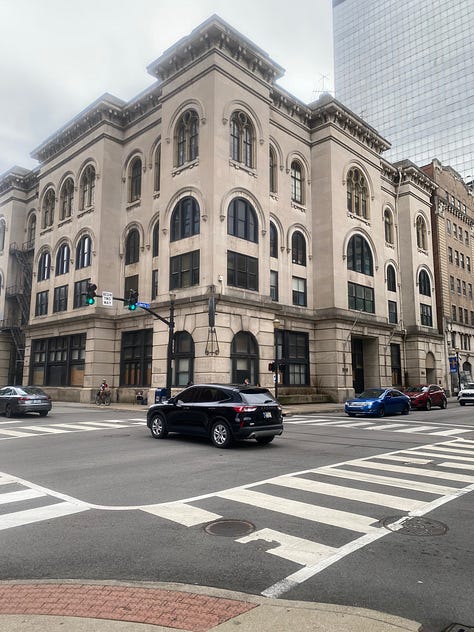
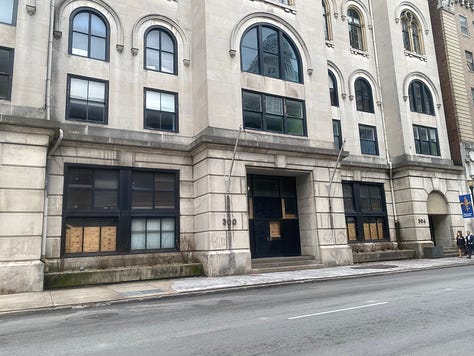
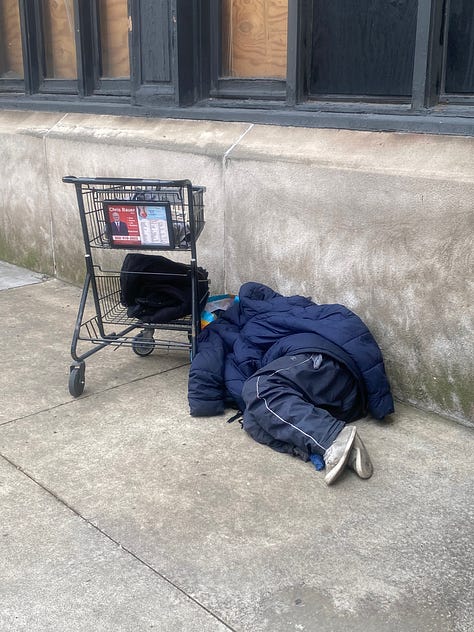
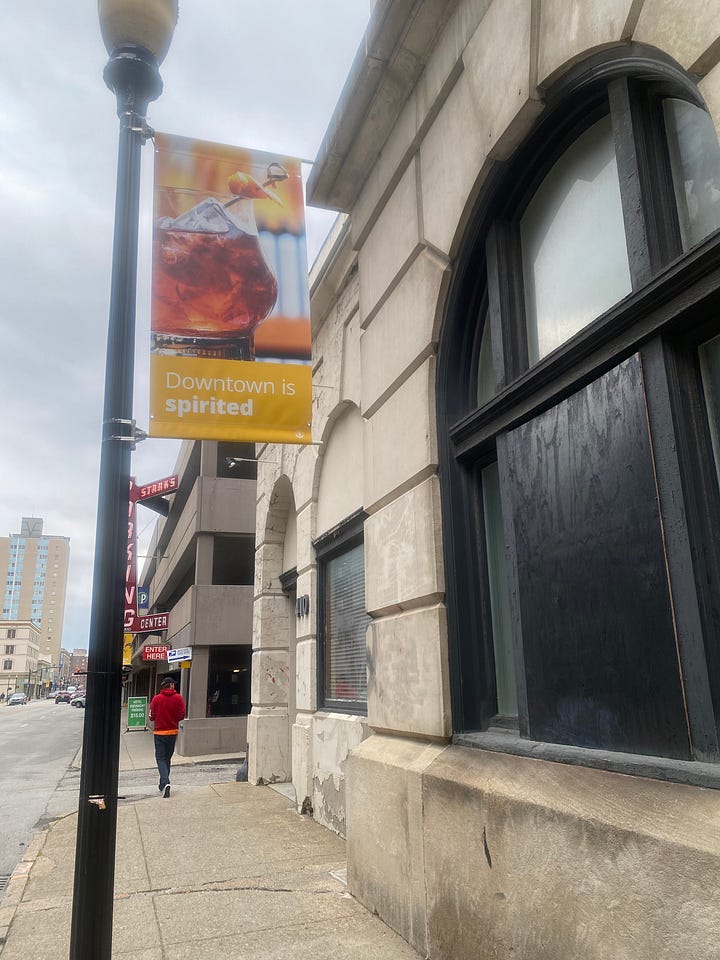
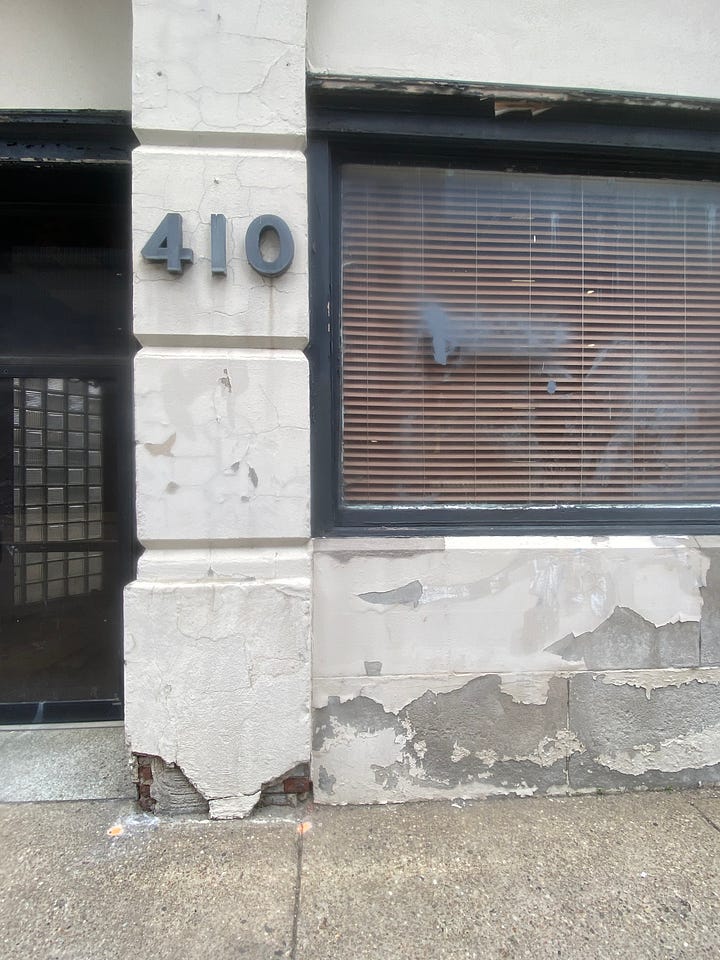
The homicide statistics tell a sad story. In 2020, a then-record 173 homicides were committed. In 2021, 188 homicides occurred. In 2022, murders fell to 160. So far in 2023, Louisville’s suffered 32 homicides.
Out of the crime statistics emerge some bizarre stories. Last October, a man got out of a vehicle and attacked a man, seemingly unprovoked, with the claw end of a hammer. The same day, a man slashed two people’s throats on Fourth Street Live! – again, in unprovoked attacks. Fortunately, all the victims survived. Last week, two teens stole a car in Indiana, sped across the Clark Memorial Bridge and totaled the car into a hotel at the corner of 2nd and Main Streets. How no one was hurt in that incident beguiles reason.
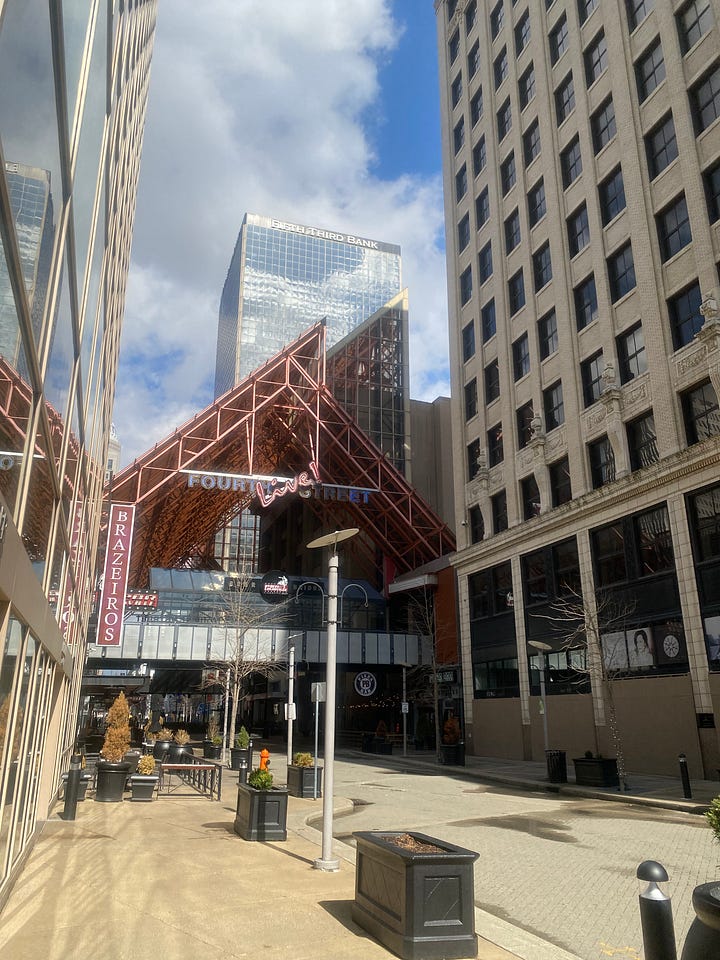
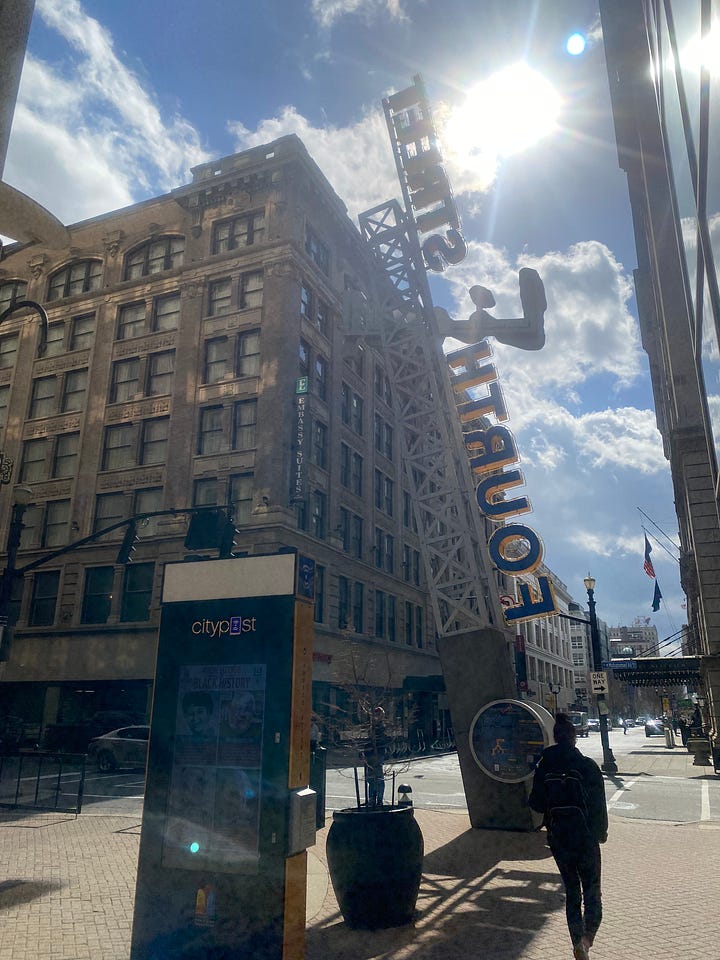
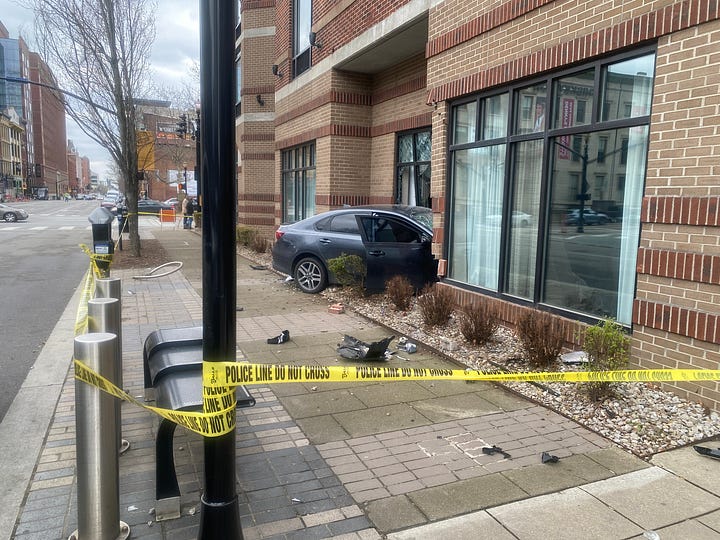
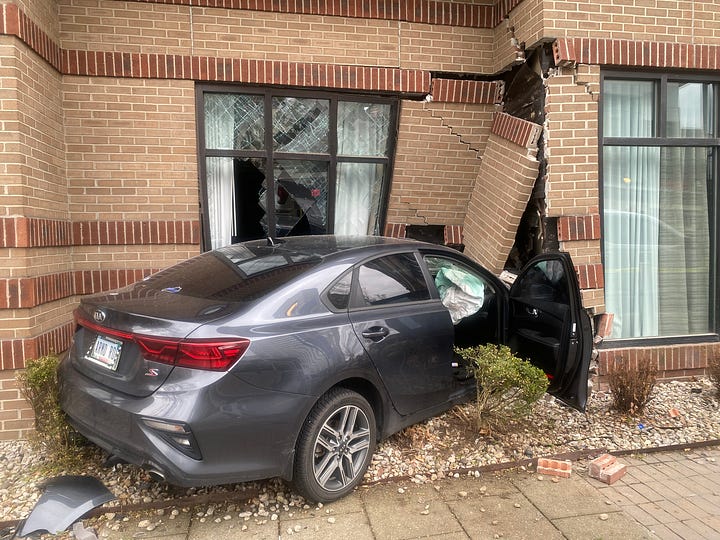
Two days before that crime, I walked two blocks from my office to CVS – across the street from the Seelbach Hotel with the closed, still-boarded-up Starbucks. Nothing overt occurred, but that short walk caused doubt and worry to swell inside me. I passed about six homeless men and women, a couple begging, a couple asleep, the rest with listless, blank stares on their worn faces. But they did not cause the fear to rise up in me.
At CVS, I picked up my items and did the self-checkout. Then I remembered another item I needed to get. Back at self-checkout, I looked over at a man yelling feverishly under his breath not at the checkout woman in front of him, not at himself, but at some other, imaginary figure. He went on for two or three minutes. I pretended to look for another item, then made sure he’d left and was nowhere to be seen before I departed.
When I returned to my office, I told a colleague of my foreboding while walking to CVS and then the incident. I said, “I’ve never felt scared or worried while walking around downtown. But today I did.”
That night, a man entered the same CVS. He shot his ex-girlfriend, who was working there, and a customer. Fortunately, both survived.
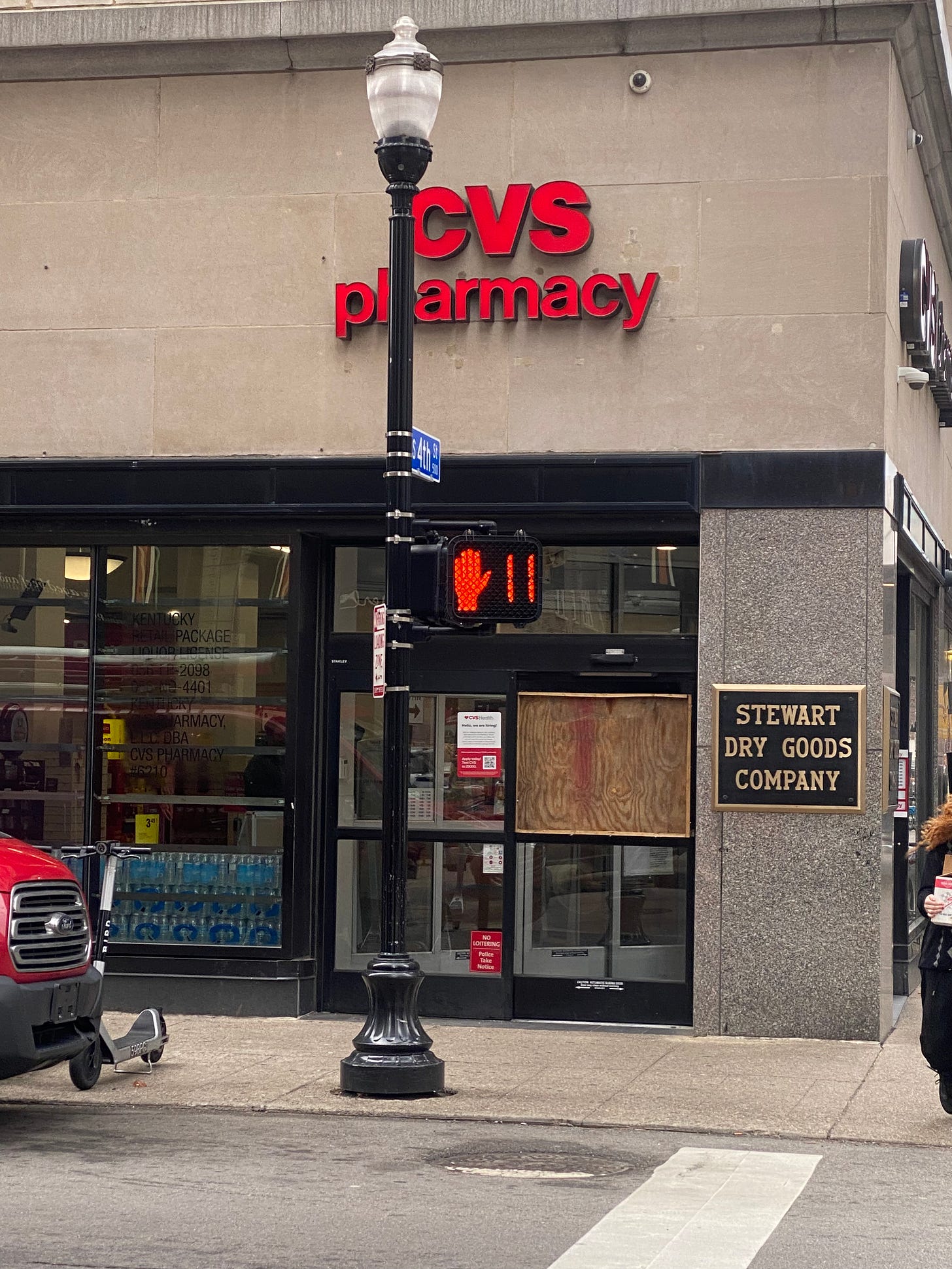
My reminiscences of a downtown lost need some context. The life of downtown Louisville had morphed significantly decades before I worked on the parking lot. The days of people coming downtown for their shopping had passed a generation before. Many businesses had flown the coop to the suburbs long, long ago – in the case of Louisville, often to the East End – an exodus that continues to this day.
The struggles of Louisville’s downtown are not unique in the country. Even our largest metro areas have experienced tough times the past few years, or for much longer. Some evidence suggests some downtowns are bouncing back, but that evidence is patchy, scattered and difficult to extract transferable lessons from.
People have begun experimenting with alternative space uses in downtowns. Those experiments include: vertical or warehouse agriculture; converting empty offices buildings into residences; and niche urban tourism. I hope those experiments go well and catalyze other creative efforts to spur usage of downtown assets. But they don’t seem likely to return downtowns to places of bustling, thriving city life. And here I will not wade into the discussion of Christopher Alexander’s notions of natural versus artificial cities, or weigh the virtues or shortcomings of urban planning. Suffice it to say those are critical ideas and conversations; theories which have actual impact in the real world.
Instead, my focus keeps returning to my family’s life in this downtown. My grandfather, dad and uncle spent nearly their entire working careers in and focused on downtown Louisville. My brother has spent about half of his working years downtown and I’m approaching the halfway mark. Downtown has been a significant place for my family – one where we could express our talents, business knowledge and indeed our creativity. My brother and I feel proud to be the third generation working in a family company that will celebrate its 70th anniversary soon – all headquartered and centered in downtown Louisville.
Certainly I understand that the story of downtown isn’t really about me or my family. At best, we play a tiny role in the vibrancy of downtown. I write simply as a witness of changes; an invested witness; if I may say, a caring witness.
It’s possible cities in the future may flourish even without a central business hub. I am not wedded to the notion that a thriving downtown is a necessary or good thing for urban areas. That has been true in history, but human constructs of living evolve – history may not dictate the future.
For me, what emerges is the question we started with: can a city thrive without a heart? We may find out in the coming years.
—
Thank you for my amazing Foster friends for their terrific edits and suggestions: Cams Campbell, Jude Klinger and Nicolás Forero.
—
Photographs taken February 27 and March 23, 2023. Image created by Midjourney.




I’m personally conflicted about downtowns, because it does seem arbitrary in our current economy to make all the resources and people of a metro area move themselves in and out of downtown each day. However, life does feel a little emptier without an agreed upon, routine, physical gathering place.
Something that strikes me about a lot of sprawling Latin American cities is the fact that their “downtown” has ceased to be the center of activity (often becoming more of a historic district). These cities, it seems to me, have various “centers” without any place being THE center. In my city, during the pandemic, I enjoyed seeing our neighborhood “centers” come to life with new business popping up to cater to those now working from home. If we could have vibrant neighborhood centers, I’d be willing to let go of downtown.
The CVS situation unfolding as it did later that evening, in addition to the conversation you had with your coworker was quite unnerving. I read something from The Long Now about humanity's trajectory, the long term patterns/cycles and this question, about the heart of a city... well it lingers for me. Thank you!